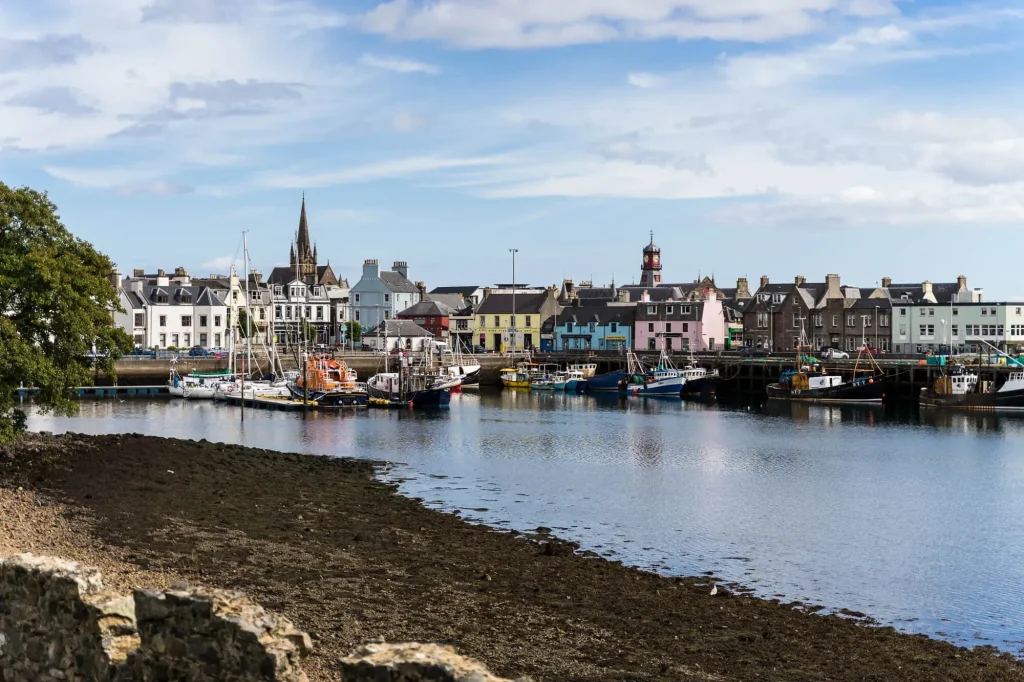Stornoway, the historic residence of Canada’s leader of the Opposition, stands as a remarkable testament to early 20th-century architecture in Ottawa. Built in 1913 and designed by architect Alan Keefer, this federal heritage building showcases the charm of Rockcliffe Park, making it one of the most storied homes in Canada. As the official residence, Stornoway has not only accommodated politicians but has also woven itself into the fabric of Canada’s political landscape. With the recent electoral changes, the fate of Stornoway is once again under scrutiny, raising questions about the next occupant of this significant residence. Discover the historic significance and the architectural beauty of Stornoway, a key landmark among Ottawa residences.
Exploring Stornoway reveals more than just a property; it embodies the legacy of leadership and the evolving history of national politics. Known as the home for the leader of the Opposition, this esteemed residence in Ottawa offers a glance into the life of Canadian leaders. Its historic roots and architectural merits distinguish Stornoway among the noteworthy homes in Canada. As a key heritage site, it not only represents governmental traditions but also houses stories of past occupants who have shaped Canadian history. Delve into the intricate details of this renowned dwelling, where the echoes of political strategies and personal tales converge.
The History of Stornoway: A Glimpse into Its Past
Stornoway, built in 1913, is not just any residence; it embodies a significant chapter of Canadian history. Commissioned by grocer Ascanio Joseph Major and designed by architect Alan Keefer, Stornoway was among the first large, permanent homes in Ottawa’s prestigious Rockcliffe Park. This historic home served not only as a private residence but evolved over time into an emblem of Canadian political history, showcasing the transitions of power through various leaders of the Opposition. Its architectural features illustrate the era’s aesthetics, making it a vital part of Ottawa’s architectural landscape.
The transformation of Stornoway into an official residence occurred in the late 1940s. After serving various prominent families, including the Perley-Robertsons, it became the designated home for the leader of the Opposition in 1969, following a turbulent period of political lobbying and fundraising. This transition marks a crucial moment in recognizing the importance of housing leaders in a structured and dignified manner, allowing them to effectively engage in political discourse amid their personal lives.
Stornoway: The Official Residence of Canada’s Opposition Leader
As the official residence of the leader of the Opposition, Stornoway holds a unique position within Ottawa’s political landscape. Unlike 24 Sussex Drive, the home of the Prime Minister, Stornoway serves a critical role in ensuring the Opposition has a place to operate from a spacious, dignified setting. The residence provides a backdrop for meetings, discussions, and events that facilitate the Opposition’s functions in Parliament. This ability to seamlessly transition between personal and professional life is essential for the leader’s effectiveness.
The house’s historical significance as the Opposition leader’s residence reflects the rich tapestry of Canadian governance. Each leader who has resided at Stornoway has added a new layer to its legacy, from the likes of George Drew and Pierre Trudeau to more recent figures such as Andrew Scheer and Pierre Poilievre. These leaders not only lived there but also engaged with the Canadian public, making Stornoway a living museum of political history.
Architectural Features of Stornoway: A Heritage Building
Stornoway stands out with its architectural elegance, designed as a two-and-a-half-story wooden house featuring a stucco façade. Its blend of simplicity and detail is evident, such as the wooden window shades and small pediment adorning the entrance. Over the decades, the house has seen various renovations, reflecting both its evolving purpose and the need for modern amenities while preserving its historic charm. The home not only serves as a residence but also as a representation of Canada’s architectural heritage.
Recognized by the Federal Heritage Buildings Review Office, Stornoway boasts a variety of notable features that contribute to its historical value. The additions made by the Perley-Robertson family in the 1920s, such as the two-storey wing and converted garage, showcase the adaptive reuse of space to suit modern needs without compromising the original structure. These characteristics warrant appreciation not only for their aesthetic appeal but for their role in preserving Canada’s historical narrative.
Notable Residents: Who Has Lived at Stornoway?
Throughout its history, Stornoway has been home to many notable figures in Canadian politics, each leaving their mark on the residence. The first Opposition leader to call Stornoway home was George Drew in 1950, followed by luminaries such as Lester B. Pearson and John Diefenbaker. Each leader brought their unique leadership style, contributing to the rich political narrative that Stornoway represents. Their residency often coincided with pivotal moments in Canadian history, adding depth to the stories held within its walls.
Interestingly, some leaders, such as NDP’s Jack Layton, chose not to fully utilize Stornoway as home due to personal circumstances. Layton’s brief stay highlights the complexities surrounding the role of residence in political life. The stories of those who have decided to stay, and those who have opted out, further enrich Stornoway’s legacy, suggesting that the house is as much about personal narrative as it is about political duty.
The Role of Stornoway in Canadian Politics
Stornoway plays a pivotal role in shaping the political scenery in Canada, serving as a place where impactful decisions and discussions take place. Beyond its primary function as a residence, it provides a platform for the leader of the Opposition to engage with various stakeholders and the media. The ambiance of the home allows for a more relaxed interaction compared to the formal settings of Parliament, fostering essential dialogues essential to the Opposition’s mandate.
Moreover, the existence of Stornoway symbolizes the importance of tradition in Canadian governance. As the governmental landscape continues to evolve, having dedicated spaces for leaders ensures continuity in democratic practices. The building’s history serves as a reminder to current and future politicians of the values and responsibilities bestowed upon them, underscoring their role in shaping a cohesive national narrative.
Preserving Stornoway: A Commitment to Heritage
Maintaining Stornoway as a federal heritage building is crucial in preserving Canada’s historical narrative. The continuous efforts by Parks Canada and other organizations ensure that the architectural marvel does not succumb to the passage of time. This commitment not only safeguards the physical structure but also protects the stories and experiences of those who have lived there, turning Stornoway into a repository of Canadian history.
Public engagement and education are pivotal components of preserving Stornoway. Tours and informational displays contribute to the appreciation of the residence among Canadians and visitors alike. These educational initiatives foster a collective understanding of the country’s heritage, reinforcing the significance of historical homes like Stornoway in narrating Canada’s evolving political landscape.
Stornoway’s Garden: A Historical Landscape
The gardens surrounding Stornoway add another layer of historical significance and beauty to the residence. Designed with both aesthetics and functionality in mind, these gardens reflect the highest standards of landscape architecture of the early 20th century. The gardens not only provide a picturesque setting for official events but also create a serene environment for the leaders residing within. This integration of nature and architecture is a testament to the careful planning undertaken when establishing the residence.
Maintaining the gardens of Stornoway also plays an important role in the preservation of its heritage. They are meticulously cared for to retain the original design elements while incorporating modern landscaping practices. This balance of old and new demonstrates a dedication to respect the historical context of the residence while adapting to contemporary environmental standards, creating a sustainable landscape that honors its past.
Future of Stornoway: Uncertainties Ahead
As political tides change, so too does the future of Stornoway. With the recent election results, the residence may soon welcome new occupants, raising questions about the continuity of its legacy. The transition from one leader to another can bring about shifts in how the residence is utilized and the public engagement associated with it. Each new leader brings their perspective, which can influence the traditions upheld within these historic walls.
Moreover, discussions surrounding potential renovations or expansions could arise as future leaders make the residence their own. Balancing the needs of modern-day politics with the conservation of its historic character is a challenge that lies ahead. The future of Stornoway is not only a reflection of its physical form but also an embodiment of Canada’s ongoing narrative in governance and leadership.
Cultural Significance of Stornoway: Beyond Politics
Stornoway’s significance extends beyond its political associations; it serves as a cultural symbol of Canada’s heritage. The residence is often seen as a critical site for civic engagement, hosting cultural events, community meetings, and official gatherings that transcend political lines. This role in promoting cultural cohesion makes Stornoway a focal point for understanding Canada’s diverse tapestry.
In addition, the stories shared within Stornoway reflect the broader Canadian identity. By examining the lives and experiences of those who resided there, one can gain insights into the evolving social dynamics and challenges within Canada. The home stands as more than just a dwelling for political leaders; it represents the collective identity and history of the nation.
Frequently Asked Questions
What is Stornoway, the residence of Canada’s leader of the Opposition?
Stornoway is an official residence located in Ottawa’s Rockcliffe Park neighborhood. It serves as the home for the leader of the Opposition in Canada and reflects a significant piece of federal heritage, originally built in 1913. Stornoway not only offers insight into Canada’s political history but is also recognized as a federal heritage building.
Who has lived in Stornoway throughout its history?
Many prominent figures have resided at Stornoway, including the first leader of the Opposition to stay there, George Drew, in 1950. Other notable residents include Lester Pearson, John Diefenbaker, Pierre Trudeau, and more recently, Erin O’Toole and Pierre Poilievre. Each leader’s stay contributes to the residence’s rich historical narrative.
Why is Stornoway considered a historical home in Canada?
Stornoway is considered a significant historical home in Canada due to its architecture and the role it has played in political history since its construction in 1913. It symbolizes the evolving nature of Ottawa residences, having originally been built during one of the first major residential expansions in Rockcliffe Park.
What architectural features distinguish Stornoway?
Stornoway is designed as a two-and-a-half-story wooden structure clad in stucco, featuring simple detailing and distinctive decorative elements like a pediment above the entrance and a tall round-headed window. Significant additions, like a two-storey wing designed in the 1920s, further enhance its architectural significance.
How did Stornoway become the official residence for the leader of the Opposition?
Stornoway became the official residence for the leader of the Opposition in 1970 after a trust established to maintain the property was unable to do so financially. The Government of Canada acquired the residence, ensuring it would serve as a home for future leaders of the Opposition.
What impact did Crown Princess Juliana have on Stornoway?
During World War II, Stornoway served as the temporary residence for Crown Princess Juliana of the Netherlands and her family while they fled from the German invasion. This unique historical event adds to the significance of Stornoway as a place of refuge during a tumultuous time.
Have there been any leaders who chose not to stay at Stornoway?
Yes, notable leaders like Jack Layton of the NDP stayed only briefly at Stornoway, preferring his home in Toronto during his battle with cancer. Additionally, Lucien Bouchard, leader of the Bloc Quebecois, declined to reside there when his party became the Official Opposition.
What is the current status of Stornoway regarding federal heritage?
Stornoway is officially recognized by the Federal Heritage Buildings Review Office as a federal heritage building, highlighting its significance in Canada’s history and its architectural value, which contributes to its preservation and status as a historical home.
What changes have occurred to Stornoway since its construction?
Stornoway has undergone various renovations since its construction in 1913, including the addition of a two-storey wing and alterations to enhance its aesthetic appeal. However, it has largely remained true to its original design with minimal changes to its historical structure.
What type of events has Stornoway witnessed in Canada’s political landscape?
Stornoway has witnessed several significant events in Canada’s political landscape, hosting numerous leaders of the Opposition who engaged in crucial political discussions and strategy planning that shaped the country. Its role as a residence for opposition leadership makes it a key player in Canada’s democratic tradition.
| Key Point | Details |
|---|---|
| Location | Rockcliffe Park, Ottawa, Canada |
Summary
Stornoway, the historic residence of Canada’s leader of the Opposition, holds significant cultural and political value. Built in 1913, this home has been a pivotal location throughout Canadian political history, housing prominent leaders such as George Drew and Pierre Trudeau. As Stornoway prepares for its next occupant amidst recent electoral changes, it symbolizes the intertwining of tradition and modernization in Canada’s political landscape.



